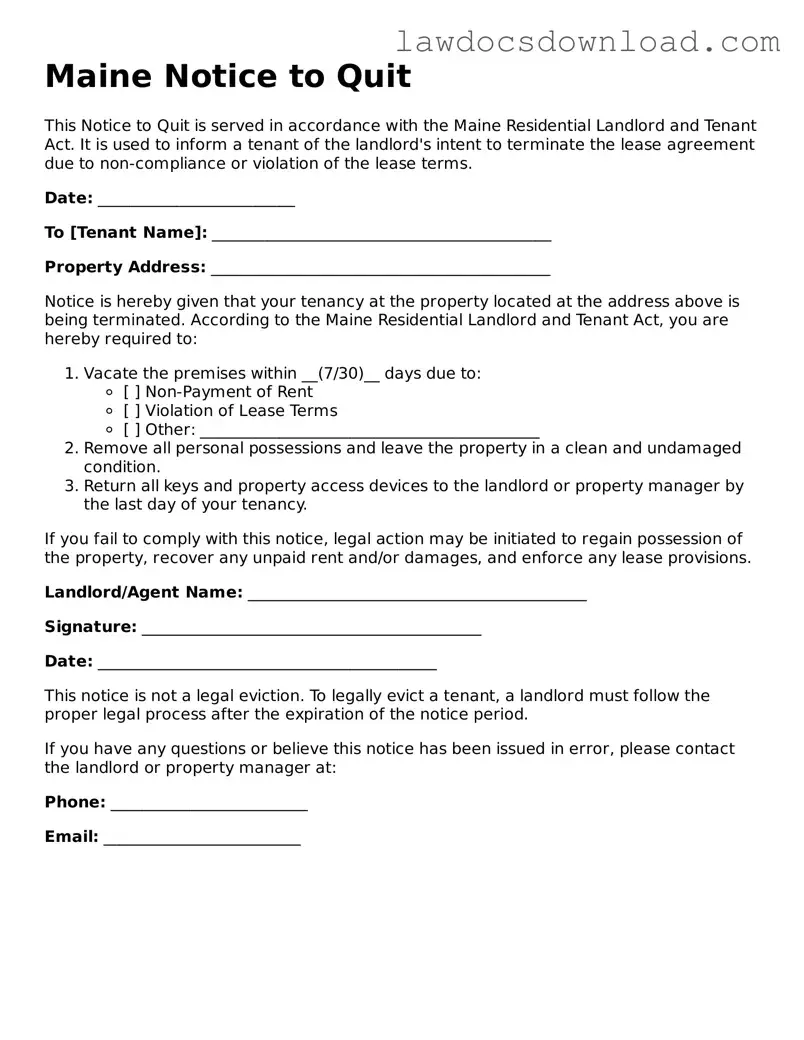Maine Notice to Quit
This Notice to Quit is served in accordance with the Maine Residential Landlord and Tenant Act. It is used to inform a tenant of the landlord's intent to terminate the lease agreement due to non-compliance or violation of the lease terms.
Date: _________________________
To [Tenant Name]: ___________________________________________
Property Address: ___________________________________________
Notice is hereby given that your tenancy at the property located at the address above is being terminated. According to the Maine Residential Landlord and Tenant Act, you are hereby required to:
- Vacate the premises within __(7/30)__ days due to:
- [ ] Non-Payment of Rent
- [ ] Violation of Lease Terms
- [ ] Other: ___________________________________________
- Remove all personal possessions and leave the property in a clean and undamaged condition.
- Return all keys and property access devices to the landlord or property manager by the last day of your tenancy.
If you fail to comply with this notice, legal action may be initiated to regain possession of the property, recover any unpaid rent and/or damages, and enforce any lease provisions.
Landlord/Agent Name: ___________________________________________
Signature: ___________________________________________
Date: ___________________________________________
This notice is not a legal eviction. To legally evict a tenant, a landlord must follow the proper legal process after the expiration of the notice period.
If you have any questions or believe this notice has been issued in error, please contact the landlord or property manager at:
Phone: _________________________
Email: _________________________
